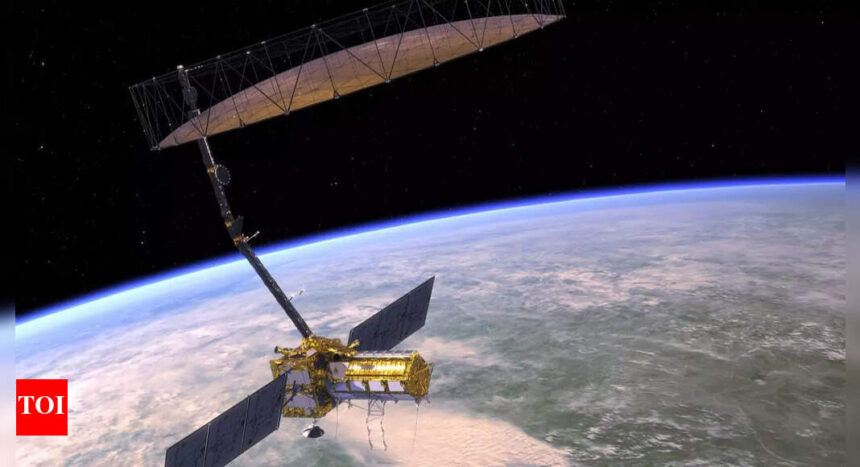ISRO and NASA Collaborate for NISAR Mission Launch in 2025
India’s Space Research Organisation (ISRO) and NASA are set to launch a highly anticipated collaborative mission, the NASA-ISRO Synthetic Aperture Radar (NISAR), in June 2025. This ambitious Earth observation satellite will boast one of the largest and most advanced radar imaging systems ever launched into space.
Key Highlights:
- Collaborative Mission: ISRO and NASA are finalizing the launch date for the NISAR mission, scheduled for June 2025.
- Launch Vehicle: The GSLV-F16 rocket, which will lift off from the Satish Dhawan Space Centre in Sriharikota, is the backbone of this mission.
- Satellite Integration: The second stage of the GSLV rocket is being moved to the launch pad, indicating that the vehicle and satellite integration is nearly complete.
- Private Sector Involvement: ISRO is encouraging private sector participation by organizing a workshop to identify commercial spin-offs from the mission.
NISAR’s Radar Technology:
- Dual-Frequency Radar System: NISAR features a cutting-edge dual-frequency radar system, with the L-band radar designed by NASA and the S-band radar built by ISRO.
- Monitoring Capabilities: The satellite will monitor nearly the entire land and ice surface of the Earth every 12 days, providing high-resolution images that will transform our understanding of environmental and geological processes.
- Applications: NISAR will play a crucial role in mapping vegetation cover, forest biomass, agricultural crop stages, soil moisture, and water bodies, benefiting nations threatened by climate change and natural disasters.
ISRO’s Future Missions:
- PSLV-C61: ISRO is preparing for the launch of the PSLV-C61 carrying the Earth Observation Satellite EOS-09, which will provide high-resolution imagery of Earth’s surface.
- Gaganyaan: The second test flight of the Gaganyaan programme, known as TV-D02, will flight-test the crew escape system in a simulated abort mission.
- Chandrayaan-4: India’s lunar ambitions are soaring with the greenlit Chandrayaan-4 mission, which will bring back samples from the Moon’s southern high latitudes by October 2027.
Long-Term Goals:
- Indian Space Station: ISRO aims to build a full-fledged Indian space station, the Bhartiya Antariksh Station, by 2035.
- Moon Landing: The ambitious goal of landing an Indian astronaut on the Moon safely by 2040 is also on the horizon.
This collaborative mission represents a significant step forward in global space exploration and Earth observation, with the potential to revolutionize our understanding of the planet and its systems.
Reference : https://timesofindia.indiatimes.com/science/isro-and-nasas-nisar-mission-set-to-launch-in-june-after-years-of-preparation/articleshow/120718477.cms








